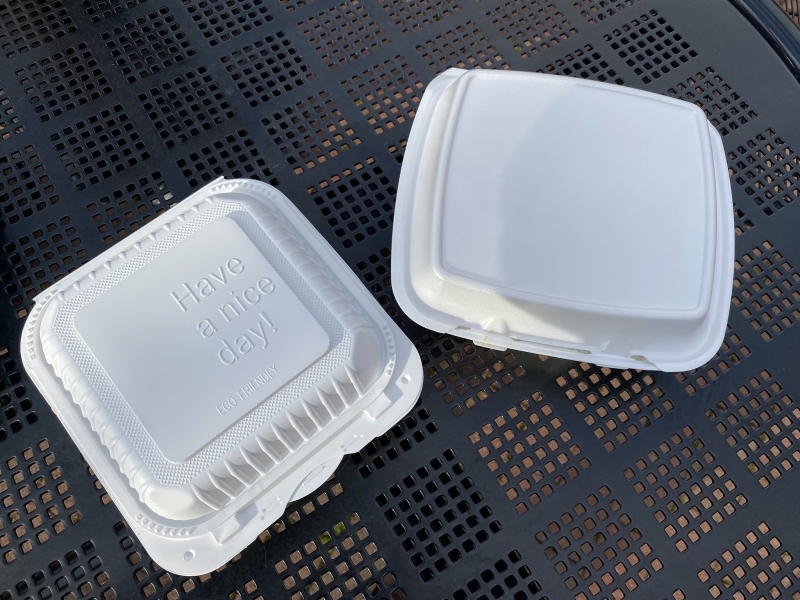Per- and polyfluoroalkyl substances, a class of toxic synthetic chemicals collectively known as PFAS, are all around us—in the environment and in our bodies. According to the Agency for Toxic Substances and Disease Registry, most people in the United States have PFAS in their blood. Scientific studies have shown that exposure to these “forever chemicals” can lead to a variety of adverse health effects, including increased cholesterol, pregnancy complications, and kidney and testicular cancers; recent studies also suggest that PFAS may reduce resistance to infectious diseases such as COVID-19 and may reduce antibody responses to vaccines.
PFAS chemicals are used in industrial and manufacturing processes. They are found in firefighting foam and in common consumer products such as nonstick cookware, stain- and water-resistant carpets, weatherproof clothing, product packaging, and personal care products. In recent years, considerable attention has been focused on policymaking to address PFAS contamination, particularly in drinking water. These efforts are vital to protecting the health of all people in the United States, and especially those who may be at increased risk from exposure, including children and those who live near sources of PFAS contamination, which are often located in lower-income communities.
 In just the past few months, there have been significant developments in another area of PFAS policy: keeping the substances out of packaging for food and other items. PFAS have been commonly used in food packaging, particularly grease-proof products such as fast food and carryout containers, where the chemicals can migrate into food. CDC finds that most non-occupational exposure to PFAS occurs by consuming contaminated water or food. And the New York-based group WE ACT for Environmental Justice highlights the importance of reducing PFAS in food packaging to environmental justice communities, in light of studies documenting the higher “level of access to fast food in neighborhoods with high concentrations of Black/African Americans.”
In just the past few months, there have been significant developments in another area of PFAS policy: keeping the substances out of packaging for food and other items. PFAS have been commonly used in food packaging, particularly grease-proof products such as fast food and carryout containers, where the chemicals can migrate into food. CDC finds that most non-occupational exposure to PFAS occurs by consuming contaminated water or food. And the New York-based group WE ACT for Environmental Justice highlights the importance of reducing PFAS in food packaging to environmental justice communities, in light of studies documenting the higher “level of access to fast food in neighborhoods with high concentrations of Black/African Americans.”
Back in 2018, the Washington State Legislature took an important first step by establishing that no person may manufacture or sell in the state “food packaging to which PFAS chemicals have been intentionally added in any amount” if the Department of Ecology determines that safer alternatives are available. Last month, the Department published its finding that safer alternatives are available for four types of food packaging, and PFAS will be restricted in these four types of packaging starting in February 2023.
New York enacted legislation in December that includes a broad prohibition: “No person shall distribute, sell or offer for sale in this state food packaging containing perfluoroalkyl and polyfluoroalkyl (PFAS) substances as intentionally added chemicals.” The measure takes effect on December 31, 2022.
Maine’s Legislature has also addressed PFAS in packaging, though it has not established a ban. A 2019 law provides that if the state environmental agency determines that a safer alternative is available, it must adopt a rule prohibiting “the sale of a food package to which PFAS have been intentionally introduced in any amount greater than an incidental presence.” The law did not mandate an alternatives assessment; however, given recent developments in New York and Washington, the state is well-positioned to take further action.
In all three of these states, the PFAS legislation amended existing laws governing chemicals in food packaging. The laws are based on the Model Toxics in Packaging Legislation, which was developed in 1989 under the auspices of the Coalition of Northeast Governors Policy Research Center to address solid waste problems created by the inclusion of toxic substances in packaging. The original model legislation addressed four substances, prohibiting the “sale or distribution of package or packaging components” containing lead, cadmium, mercury, and hexavalent chromium beyond an incidental presence up to 100 parts per million, or 0.01%.
Last month, the Toxics in Packaging Clearinghouse announced a significant expansion of the model law, adding both PFAS and phthalates as regulated chemicals. The legislation now provides that a “manufacturer, supplier or distributor may not offer for sale or for promotional purposes a package or packaging component to which PFAS has been intentionally introduced during manufacturing or distribution in any amount. There shall be no detectable PFAS in any package or packaging component.” The law also prohibits substituting chemicals “in a quantity or manner that creates a hazard as great as or greater than the hazard created by the chemical regulated by this Act.”
To date, a total of 19 states have enacted laws based on the Model Toxics in Packaging Legislation. Revisions to this model law, along with legislative and regulatory actions in Washington and New York, provide a road map for those states to update their policies to better protect consumers—and for other states to take action to address PFAS.

